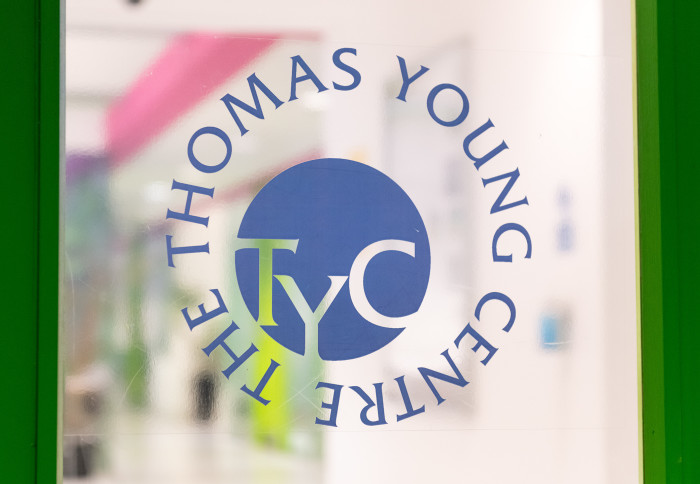
- This event has passed.
TYC Soiree: Many-Body Theory Calculations on Materials – Marina Filip & Linn Leppert
Venue: LG11, Bentham House,
18 January 2024 @ 4:00 pm – 6:00 pm
Marina Filip – University of Oxford
Excitons in Heterogeneous Semiconductors from First Principles Computational Modeling: Impact of Ionic Vibrations, Temperature, Crystal Structure and Chemical Composition
Understanding the physics of how excitons form, delocalize and dissociate is of key importance to
the functionality of a wide range of applications, such as photovoltaics, lighting and lasing.
Development of new computational modeling techniques based on density functional theory (DFT)
and many body perturbation theory capable to describe interactions between excitons and other
quasiparticles constitutes a frontier first principles computational modeling of materials. The
GW+Bethe-Salpeter Equation (BSE) approach [1,2] is the state-of-the-art approach to compute
optical excitation energies in semiconductors and insulators and provides the foundation of new
methods aimed at describing complex excited state phenomena.
In the first part of my talk, I will present a new methodological development that generalizes the
BSE to include the impact of ionic vibrations on the dielectric screening of excitons [3,4], and show
how this allows us to compute temperature dependent exciton binding energies, as well the rate of
dissociation of excitons upon scattering with phonons.
In the second part of my talk (as time allows), I will present a recent study of exciton delocalization
in several heterogeneous semiconductors belonging to the broader family of halide perovskites. I
will discuss our recent analysis of optical excitations in quasi-2D organic-inorganic halide
perovskites [5-8], and show how subtle structural features can significantly impact the
delocalization of excitons in these systems.
- Hybertsen & Louie, Phys. Rev. B 34, 5390 (1986).
- Rohlfing & Louie, Phys. Rev. Lett. 81, 2312 (1998).
- Filip, Haber & Neaton, Phys. Rev. Lett. 127, 67401 (2021).
- Alvertis, Haber, Li, Coveney, Louie, Filip & Neaton, submitted (2023), arXiv:2312.03841.
- Coveney, Haber, Alvertis, Neaton & Louie, submitted (2023).
- Filip, Qiu, Del Ben & Neaton, Nano Lett. 22 (12), 4870-4878 (2022).
- McArthur, Filip & Qiu, Nano Lett. 23 (9), 3796-3802 (2023).
- Chen & Filip, J. Phys. Chem. Lett. 14, 47, 10634-10641 (2023).
Linn Leppert – University of Twente
A first-principles perovskites potpourri: Electronic and excited-state structure of double, layered, extended and non-perovskites
Perovskite solar cells in which methylammonium lead iodide is used as a solar absorber material, have reached maturity in the last years owing to a concerted effort to optimize material synthesis, stability, and device performance. However, the halide perovskite family features thousands of other stable members with highly tunable optoelectronic properties. In this presentation, I will provide an overview of our current understanding of the electronic and excited-state structure of several classes of perovskites – double, layered, extended – as well as some perovskite-like structures (thrown in for good measure). We use Green’s function-based many-body perturbation theory in the GW and Bethe-Salpeter Equation approach to calculate accurate bandstructures [1, 2], optical absorption spectra and excitonic properties from first principles. Our calculations allow us to map the complex landscape of electronic properties and excitons, understand the impact of chemical heterogeneity [3 – 6], dimensionality [5 -7] and temperature effects [8], and provide chemically intuitive rules for when to trust canonical models for excitons in these materials.
[1] L. Leppert, T. Rangel, J. Neaton, Phys. Rev. Materials 2019, 3, 103803.
[2] T. Lebeda, T. Aschebrock, J.Sun, L. Leppert, S. Kümmel, Phys. Rev. Materials 2023, 7, 093803.
[3] A. Slavney, B. Connor, L. Leppert, H. Karunadasa, Chem. Sci. 2019, 10, 11041.
[4] R.-I. Biega, M. Filip, L. Leppert, J. B. Neaton, J. Phys. Chem. Lett. 2021, 12, 2057.
[5] R.-I. Biega, Y. Chen, M. R. Filip, L. Leppert, Nano Lett. 2023, 23, 8155.
[6] H. J. Jöbsis, K. Fykouras, J. Reinders, J. van Katwijk, J. Dorresteijn, T. Arens, I. Vollmer, L. Muscarella, L. Leppert, E. M. Hutter, Advanced Functional Materials 2023, 2306106.
[7] B. A. Connor, L. Leppert, M. D. Smith, J. B. Neaton, H. I. Karunadasa, J. Am. Chem. Soc. 2018, 140, 5235.
[8] S. Krach, N. Forera-Correa, R.-I. Biega, S. E. Reyes-Lillo, L. Leppert, J. Phys. Condens. Matter 2023, 35, 174001.
[9] B. A. Connor, A. C. Su, A. H. Slavney, L. Leppert, H. Karunadasa, Chem. Sci. 2023, accepted manuscript.
[10] R.-I. Biega, M. Bokdam, K. Herrmann, J. Mohanraj, D. Skyrbek, M. Thelakkat, M. Retsch, L. Leppert, J. Phys. Chem. C 2023, 127, 9183.
Marina R. Filip, University of Oxford
Excitons in Heterogeneous Semiconductors from First Principles Computational Modeling:
Impact of Ionic Vibrations, Temperature, Crystal Structure and Chemical Composition
Understanding the physics of how excitons form, delocalize and dissociate is of key importance to
the functionality of a wide range of applications, such as photovoltaics, lighting and lasing.
Development of new computational modeling techniques based on density functional theory (DFT)
and many body perturbation theory capable to describe interactions between excitons and other
quasiparticles constitutes a frontier first principles computational modeling of materials. The
GW+Bethe-Salpeter Equation (BSE) approach [1,2] is the state-of-the-art approach to compute
optical excitation energies in semiconductors and insulators and provides the foundation of new
methods aimed at describing complex excited state phenomena.
In the first part of my talk, I will present a new methodological development that generalizes the
BSE to include the impact of ionic vibrations on the dielectric screening of excitons [3,4], and show
how this allows us to compute temperature dependent exciton binding energies, as well the rate of
dissociation of excitons upon scattering with phonons.
In the second part of my talk (as time allows), I will present a recent study of exciton delocalization
in several heterogeneous semiconductors belonging to the broader family of halide perovskites. I
will discuss our recent analysis of optical excitations in quasi-2D organic-inorganic halide
perovskites [5-8], and show how subtle structural features can significantly impact the
delocalization of excitons in these systems.
- Hybertsen & Louie, Phys. Rev. B 34, 5390 (1986).
- Rohlfing & Louie, Phys. Rev. Lett. 81, 2312 (1998).
- Filip, Haber & Neaton, Phys. Rev. Lett. 127, 67401 (2021).
- Alvertis, Haber, Li, Coveney, Louie, Filip & Neaton, submitted (2023), arXiv:2312.03841.
- Coveney, Haber, Alvertis, Neaton & Louie, submitted (2023).
- Filip, Qiu, Del Ben & Neaton, Nano Lett. 22 (12), 4870-4878 (2022).
- McArthur, Filip & Qiu, Nano Lett. 23 (9), 3796-3802 (2023).
- Chen & Filip, J. Phys. Chem. Lett. 14, 47, 10634-10641 (2023).
Organised by:
Martijn Zwijnenburg
m.zwijnenburg@ucl.ac.uk

